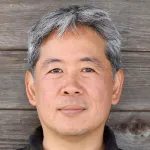
Screenshot from video by Kurt Hickman: Science and humanities students came together to replicate museum objects to explore what
it might have been like to live with and use the clay vessels.
Stanford News - July 14th, 2016 - by Robin Wander
What is the most important aspect of a replica? Physical attributes or capturing the maker’s intent?
Stanford students from two spring courses explored this question with the help of the Cantor Arts Center’s Art + Science Learning Lab.
Kristen Haring’s history students and Hideo Mabuchi’s applied physics students 3-D printed and hand-built from clay two objects in the Cantor’s collection – a cup with a lid attributed to Korea, c. 6th-5th century BCE, and a Japanese tea bowl from the Meiji period (1868–1912).
While a few cultural institutions internationally have pursued replication of objects with 3-D printing technology, none has compared that procedure with replication in the objects’ original materials.
“It is a very special project for Stanford, in that a science class and a humanities class are working together and with the Cantor,” said Haring, a lecturer in history.
Students from the two courses, Objects of History: From “Material Culture” to “Making” and The Questions of Clay: Craft, Creativity and Scientific Process, shared their different perspectives of ceramic arts and of object-based historical study.
They also considered Haring’s question: When the goal of reproduction of museum objects is to permit tactile engagement and explore what it might have been like to use and live with an object, which aspects of the original are most important to reproduce?
“This collaborative, student-led project allowed students to design and execute research relevant to contemporary issues in the historical study and preservation of objects,” said Haring. “The class began by considering physical objects as historical evidence. Then, the replication project took up physicality – making, reenactment and other modes of interactivity – as historical method.”
Susan Roberts-Manganelli, the director of Cantor’s lab, believes that allowing students to spend time in the lab is a great way to familiarize them with the materiality of art objects, technical art history and what art conservators do. It also fosters cross-disciplinary involvement.
“It gets students thinking differently about art objects, and as it is often the first time they are in a museum or conservation lab, new possibilities for research open up,” she said.

